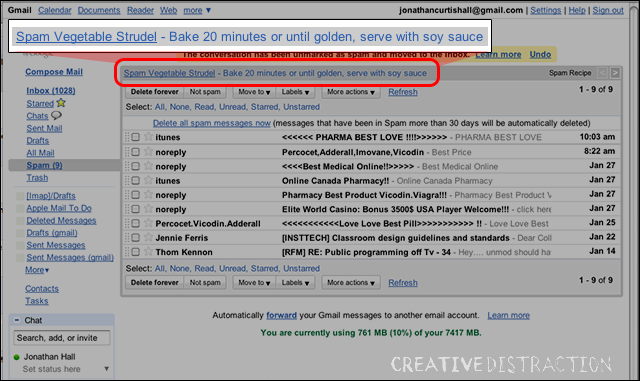Finding: Job Elimination Is More Newsworthy than Job Growth
 With so much change in how we work, we need new news sources on this beat.
With so much change in how we work, we need new news sources on this beat.
 With so much change in how we work, we need new news sources on this beat.
With so much change in how we work, we need new news sources on this beat.
For the entrepreneurs who might be reading this, let me first extend my apologies … to your spouses and families. The data I’m about to share suggests that the key to entrepreneurial success is how many times you try.
Note: The precious little I know about machine learning I learned from the brilliant Frank Wood, whose talk at the Machine Learning meetup inspired me to finally put together this post. I also worked with my friend Frederik Lang on the material presented here, but the shortcomings remain all my own.
So, here’s something I’ve been meaning to write up for almost a year: how to build an Arduino-powered interface to get data from any real-world, analog sensor into an iOS device using the mic pin on the 1/8-inch headphone jack. Meaning: a simple, cross-platform solution for data acquisition on your smartphone with *no* proprietary hardware or jail-breaking required. Sound awesome? It is.
Of course, this solution is about a year old (demo’d at Maker Faire in September 2010) pales in comparison to, say, the recently announced Android Open Accessory initiative and the Android Device Kit. Also, there are similar solutions out there that are better-designed and better-performing. (See, for example, Project HiJack by a team of researchers at the University of Michigan.) In the end, I put this page together to show how to do this data-through-headphones thing using stuff DIYers have lying around, like an Arduino.
Update: PrimeSense updated me regarding redistribution of OpenNI/NITE on Twitter: “Commercial apps are allowed and they can be packaged with OpenNI/NITE.” Thank you!
For my Kinect-hacking friends who missed last night’s “Evening With PrimeSense” meetup in NYC or otherwise have the misfortune of living elsewhere in the world, I thought I’d share some of the tastier morsels.
PrimeSense is reaching out to developers in the hope of creating a commercial “app ecosystem” on top of it’s “natural interface” technology, giving a mass market cast to all the Kinect hackery we’ve witnessed since the device’s November 2010 release.
I have a domainer habit that I’m barely trying to kick. And these days, you can’t satisfy such a habit without at least a couple of fanciful .LY domains. So, I own a couple. Okay, maybe a few.
I haven’t done anything with these domains yet–that’s part of the habit! I was thinking about using one of them for my personal URL shortener, and yes, I’m perfectly at ease using an .LY domain for this project. For one, I’m happy to support a nascent tech industry in Libya (at $75 per domain/year, no less!). For two, I received last week an e-blast note from Hadi Naser, CEO of my Libyan registrar of choice, Libyan Spider, explaining why .LY domains should always work:
.ly top-level domain works on five .ly root servers. Two are located in Libya, two are in the United States, and one is in Europe. In order for a .ly domain to stop working, all five must be offline or transmit empty responses. The Libyan servers are not in danger of being offline due to the fact that GPTC (General Post and Telecommunication Company), which controls the Internet in Libya and is also the legal representative and registry of .ly, has taken care of this issue by listing the Libyan .ly root servers in a “white list.”
Despite the Internet connection to and from Libya being temporarily suspended, the communication and synchronization between the root servers takes place. Hence, .ly domains will not be affected and will continue to run. For your information, the Internet within the country is fully on.
But my ambition to setup an .LY domain now puts me in a morally awkward position: Do I really want to ask some tech guy in Tripoli to brave bullets, airstrikes, and God-knows-what-else to modify the DNS so that my petty vision of personalized, tweetable links can be realized?
A silly little find from someone who rarely uses the Gmail interface: I was initially surprised to learn that the context-sensitive ads on my Gmail spam box included mostly canned-ham recipes like this one for “Spam Vegetable Strudel”:

Following my exploration of “systematic creativity,” I was pleased to take up sociologist David Stark’s new book, The Sense of Dissonance: Accounts of Worth in Economic Life (2009). You might not get it from the title, but this book is about the conditions that lead to creativity, innovation, and entrepreneurship in organizations. According to Stark, the presence of competing notions of value within an organization, or what he calls “dissonance,” is one such fundamental condition.
I suffered my first misdelivered Kindle newspaper yesterday. I’m not complaining, really — I’m the last person to expect 100% performance from a brand new distribution system. But I did briefly long for the days of paperboys when I saw this:
When a robot from Horizon Blue Cross Blue Shield (HBCBS) left my wife a message Monday, I was provoked first by the cheerful, familiar voice inflection in the greeting:
It’s the second call from the health insurance company in a week, so perhaps a familiar tone is warranted.
“Time to brainstorm.” That’s the signal in most organizations that the real creativity is about to begin. A brainstorm is called upon to rain diverse solutions upon our biggest problems. In the process, our institutional intelligence crackles and evolves, and from out of the murk brilliant new ideas flash — some of them golden, for sure.
But what if brainstorming isn’t always the best way to be creative?
Today, my company launched a sweet little service that lets anyone post anonymously in the Twitterverse. This service has two flavors: the angelic, heavenly Tweet From Above; and the demonic, hell-raising Tweet From Below. Use either or both as necessary.